Immerse yourself in ‘little Rome’.
Guided tours to fall in love with Mérida
Complete tour of Merida with entrance fees included
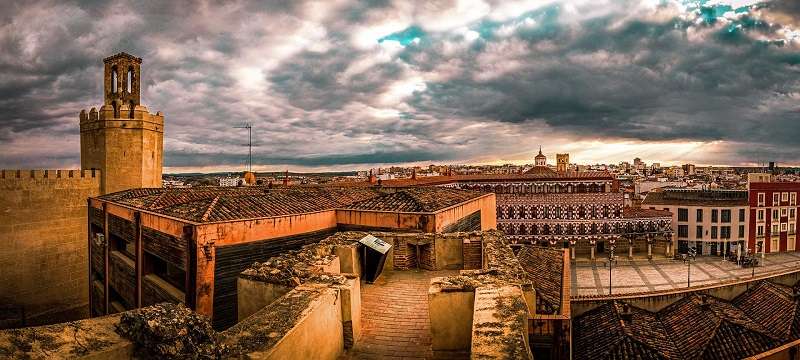
The most complete guided tour of all (and also the one that lasts the longest). A tour to leave Mérida with the tranquility of having known its heritage in depth. Of having fully immersed yourself in its history, its culture and everything that makes it unique.
Price
35€
Duration
3.5 hours
Language
Spanish
Guided tour of the amphitheater and Roman theater of Mérida

A journey 2000 years into the past to relive the Augusta Emerita of the Roman Empire. This tour of the Roman amphitheater and theater is ideal to soak up the Roman culture of Merida by visiting the essentials in just one hour. For a moment, you will be in the same arena where gladiators gave their lives in bloody fights to entertain an euphoric audience in the stands.
Price
18€
Duration
1 hour
Language
Spanish
Mysteries and Legends of Merida Tour
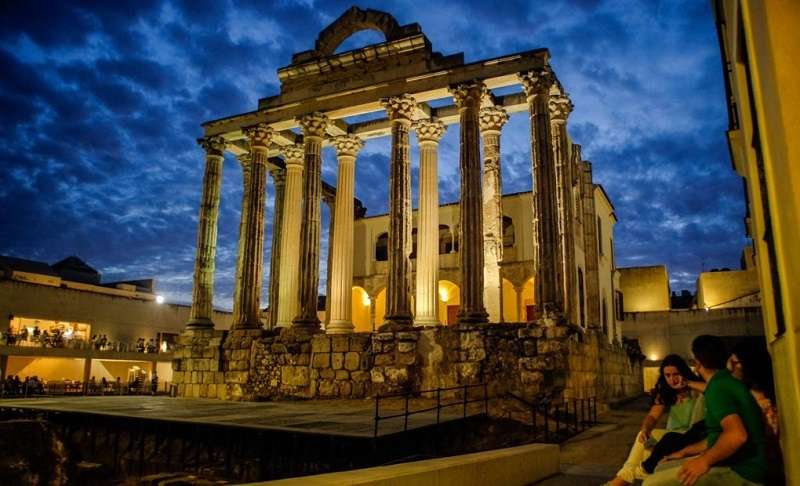
A guided night tour to enjoy the magic of Mérida illuminated. You will discover what the history books do not tell you: mysteries, legends and enchanted areas of the city. Roman, Arab and Christian stories that still live on in its streets, squares and buildings.
Price
13€
Duration
1 hora
Language
Spanish
Free guided tour of Mérida : Free tour

A free tour of Merida to discover the historic center of the city for an hour and a half, guided by a specialized local guide. Remember that it does not include entrance fees to the monuments. Although its name indicates that it is free, you are actually expected to make a financial contribution to the guide based on your satisfaction after the tour.
Price
Free
Duration
1.5 hours
Language
Spanish
La Casa del Mitreo: Free tour
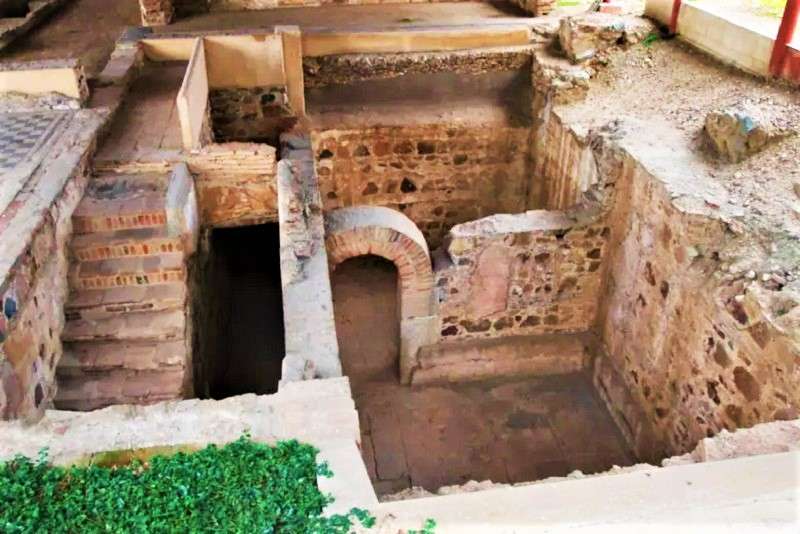
A small site with a great history. In this guided tour through the Casa del Mitreo and the Funerary Area of Columbarium you will discover its most interesting historical data: what were these places, what was their function, how were the funerary customs of the time… Ancient Rome in its purest form.
Price
Free
Duration
1.5 hours
Language
Spanish
The origins of Merida | Free tour
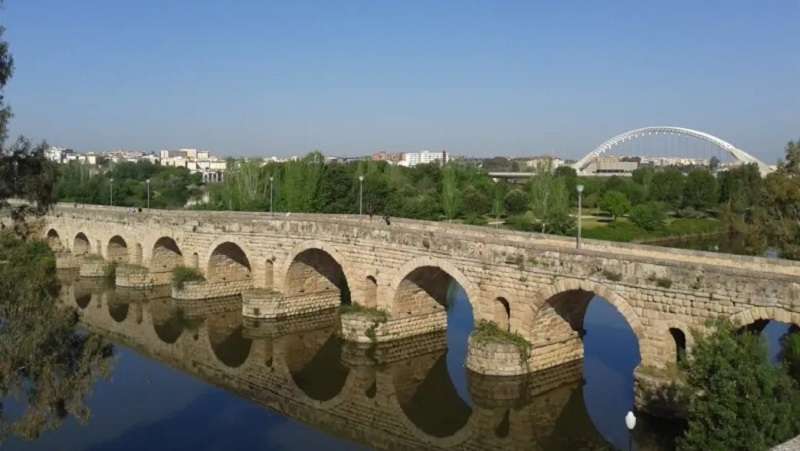
An hour and a half of history of Augusta Emerita. Freetour to learn how the capital of ancient Lusitania was founded and how it was influenced by different cultures over time. All this giving a review of the most important historical heritage of Merida.
Price
Free
Duration
1.5 hours
Language
Spanish
National Museum of Roman Art | Guided Tour
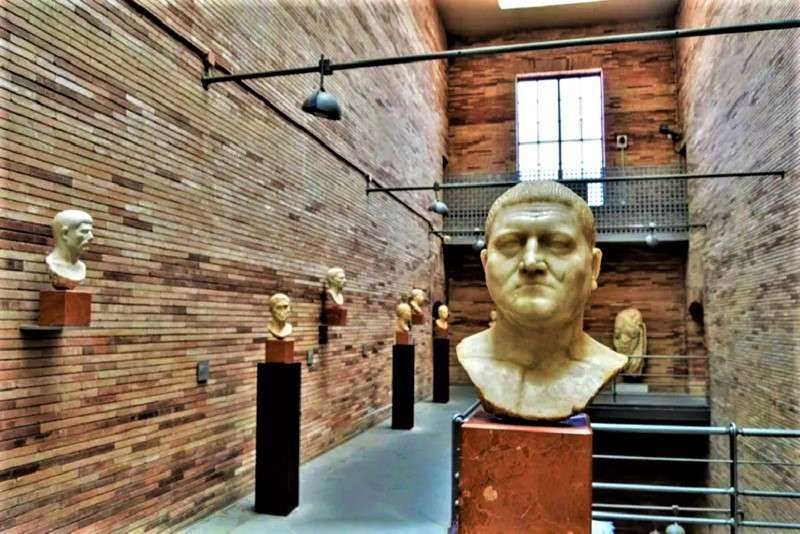
If you are passionate about Roman art and culture, the National Museum of Roman Art is the ideal place to continue contemplating, learning and, ultimately, enjoying the legacy they left us. There is nothing better than doing it with a specialized guide who will structure the visit and reveal the most interesting information.
Price
10€
Duration
1.5 hours
Language
Spanish
Guided tour of Mérida for groups | Private Tour
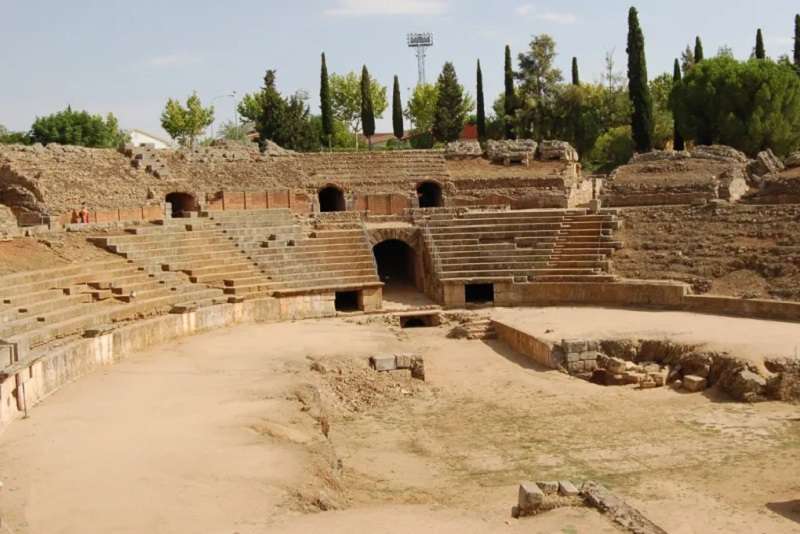
Are you coming to visit Merida in a group? This private tour is ideal to know the city and all its historical heritage in full, with a specialized guide just for you. The price includes the entrance tickets to all the monuments so you don’t have to worry about anything else but enjoying the tour.
Price
225€: groups of 5 persons
290€: groups of 8 persons
450€: groups of 14 persons
Duration
3 hours
Language
Spanish
Free tour of Christian Merida
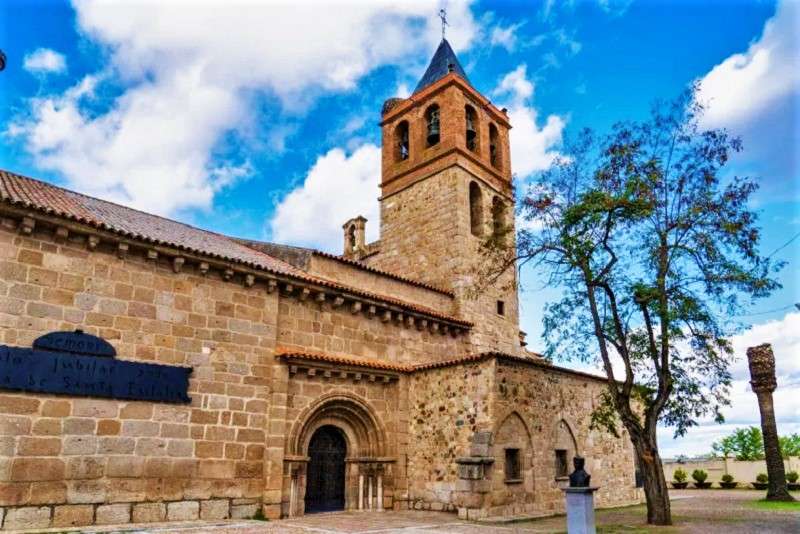
What is best known about Merida is its Roman and Arab past, but the city is also home to many Christian treasures to discover. In this guided tour of Christian Merida we will focus on sites, monuments, temples and pieces of Christian origin.
Price
Free
Duration
1.5 hours
Language
Spanish
Tour of the Roman ghosts of Merida

Do you remember the previous tour of the Casa del Mitreo and the funerary area of Los Columbarios? This tour returns to the same site, but this time to discover the mysteries of ghosts, gods of the underworld, curses and funerary rites that were practiced at the time.
Price
15€
Duration
1.5 hours
Language
Spanish
Stargazing in Merida

Night falls in Merida and the sky is a blanket of stars. It is the perfect moment to discover the Greek and Roman mythology of the stars contemplating the constellations in the open air. The activity consists of a tour along the banks of the Guadiana River with an expert guide in astronomy. Stops will be made to contemplate the starry sky and learn what the Greeks and Romans saw in it.
Price
12€
Duration
1.5 hours
Language
Spanish
What to see in Merida?
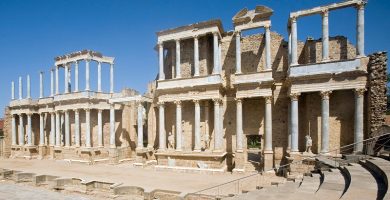
Roman Theater of Merida
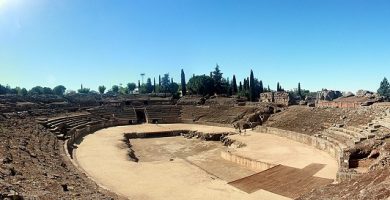
Mérida Roman Amphitheater

Roman Circus of Merida

Moorish Alcazaba of Merida
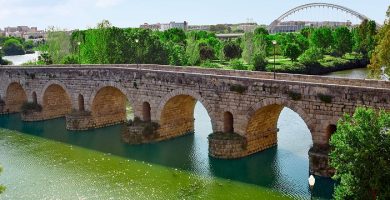
Roman Bridge of Merida over the Guadiana river
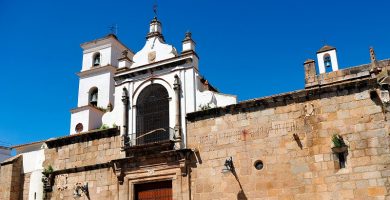
Co-cathedral of Santa María la Mayor of Mérida
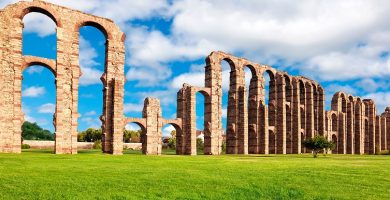
Los Milagros de Merida Aqueduct
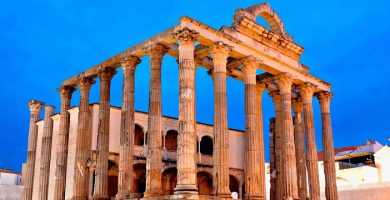
Roman Temple of Diana in Mérida
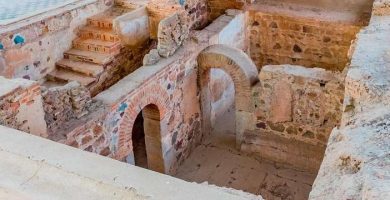
Casa del Mitreo House in Mérida
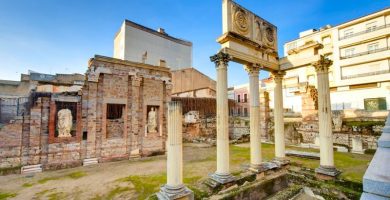
Portico of Merida’s Municipal Forum
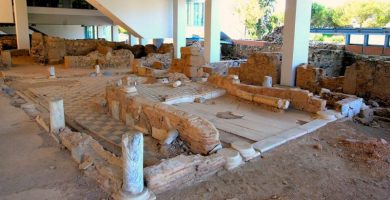
Morería de Mérida Archaeological Site

Plaza de España in Mérida
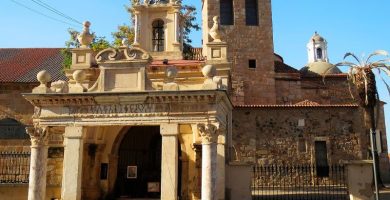
Basilica of Santa Eulalia in Mérida
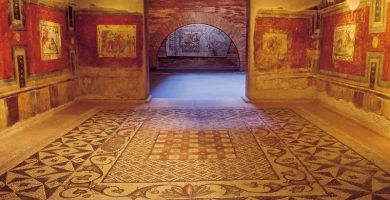
National Museum of Roman Art of Mérida
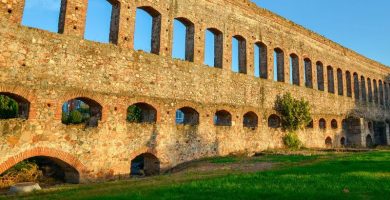
San Lázaro Aqueduct in Mérida
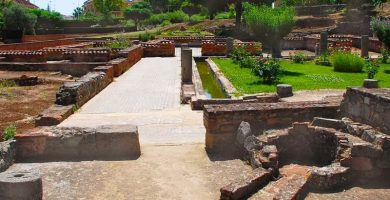
Merida Amphitheater House
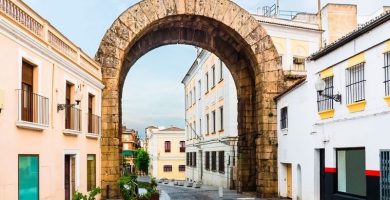
Trajan’s Arch of Mérida
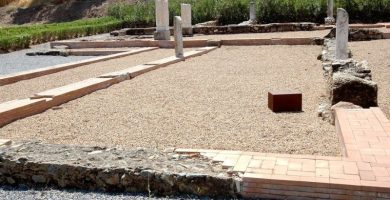
Mérida’s Xenodoquium
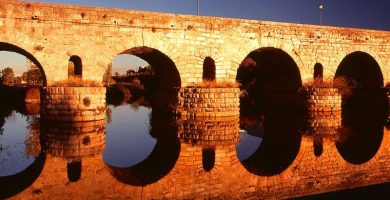
Roman Bridge over the Albarregas

Círculo Emeritense in Mérida
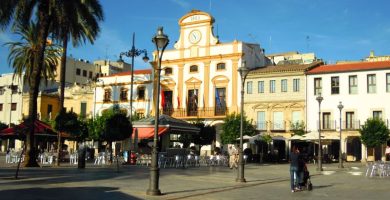
Mérida City Hall
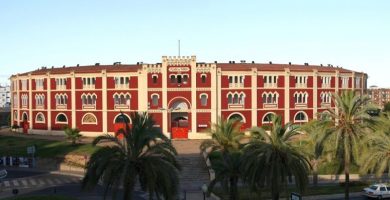
Bullring of Mérida
A little history of Merida
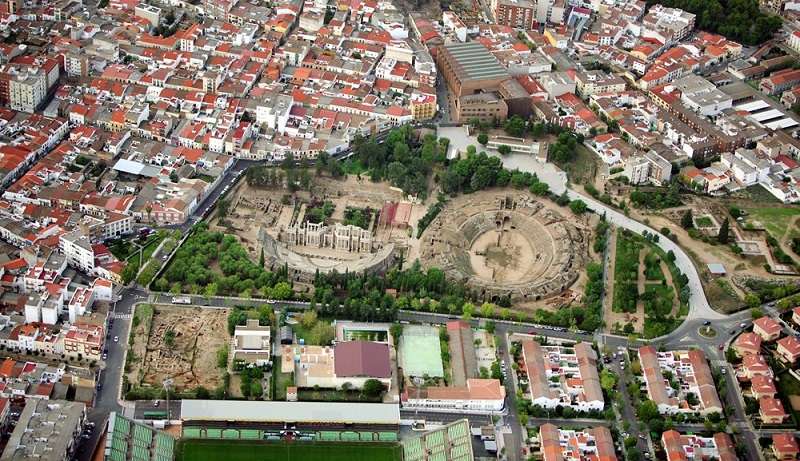
Mérida, the capital of Extremadura was established in 25 B.C. by Octavian Augustus with the name of Augusta Emerita, being the purpose of the city to welcome the veterans of the legions V Alaudae and X Gemina.
It was a walled town in which attention was paid to public buildings such as the Theater, the Amphitheater, the Circus, the baths, the temples, the reservoirs and the forums.
The construction of one of the longest Roman bridges of the Roman Empire over the Guadiana River was also remarkable. This served to establish important communications according to the level of the city.
After the fall of the Roman Empire, the Visigoths settled in Merida in the second half of the 5th century, preserving the importance that Augusta Emerita had obtained. So much so that it became the capital of the kingdom before Toledo.
It was during the occupation of the Muslims in 713 when the city began to decline, as soon after the Mozarabs began to rebel against the Caliphate authorities in the ninth century.
In 1230 Merida was reconquered by the Christian troops of Alfonso IX of Leon and became a province associated with the Order of Santiago. At that time it was an obligatory passage to Portugal for kings and nobles, and suffered the consequences of wars with Portugal or Napoleonic France.
It would be the locomotive, the new invention of the 19th century, which would give it a new prominence in Spanish history.
In 1983 it was established as the seat of the Capital of the Autonomous Community of Extremadura, and since 1993 Mérida has begun to recover its splendor, as in December of this year it was declared a World Heritage Site by UNESCO.
This was a clear boost to tourism, one of its current economic pillars.
Currently Merida is a growing city with about 60,000 inhabitants, and is becoming again the economic and political, administrative and cultural center. The tourist will be able to enjoy the historical legacy and at the same time discover its customs, gastronomy, nature and cultural offer.
Today there are remains of the ancient Augusta Emerita and of its excellent urban planning: streets and roads, sewers, dykes, bridges, aqueducts, dams, dwellings, necropolis, forums with their temples, theaters and circuses.
In addition, the National Museum of Roman Art allows us to learn more about what was that great city of antiquity.
There are also vestiges of the Paleochristian and Visigothic periods, such as numerous pieces dedicated to God and his Patron Saint, Eulalia, ruins of the old basilica of “la Mártir”, the hospital of Archbishop Mausona, among others.
In addition, you can contemplate the Muslim presence thanks to the military complex of the Alcazaba.
This is how the capital of Extremadura presents itself, without complexes and giving a singular architecture to the new heritage of the Merida of the 20th century.
If you want to learn more about Mérida, its history and heritage, don’t miss the documentary Mérida oculta, patrimonio vivo, on Canal Extremadura.

